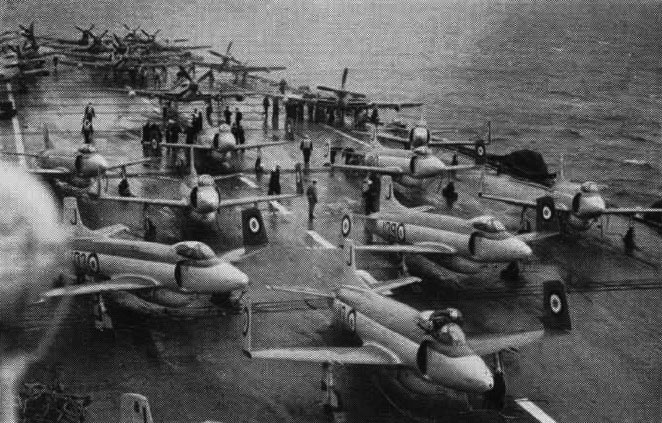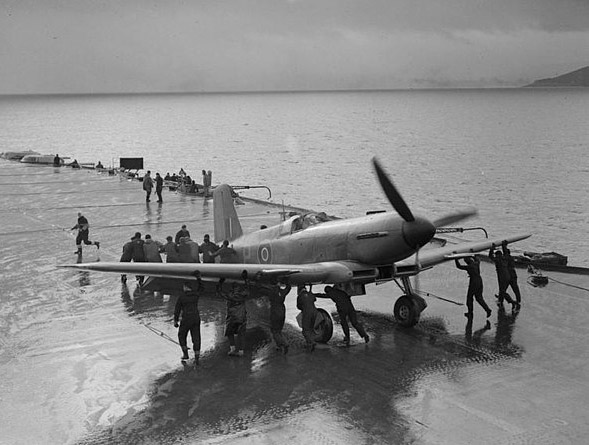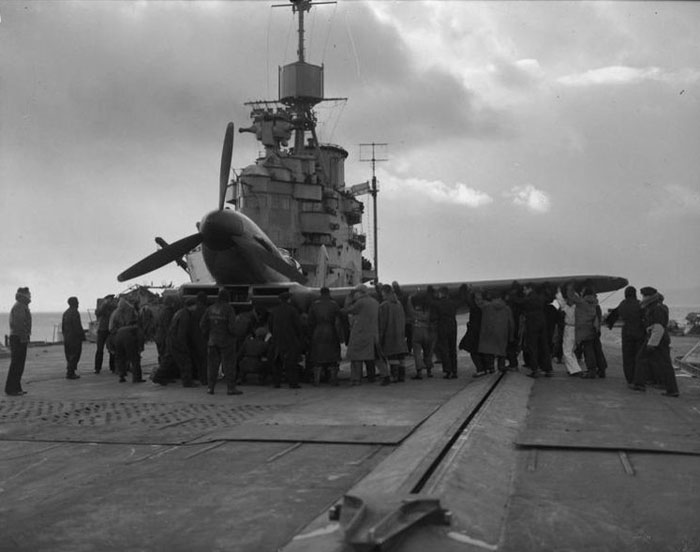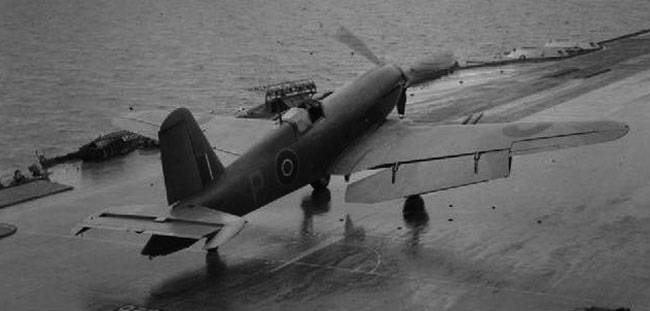
The last Blackburn piston-engine do-i-all
The Blackburn Firebrand was a British single-motor strike contender for the Fleet Air Arm of the Royal Navy planned during World War II by Blackburn Aircraft. Initially planned to fill in as an unadulterated warrior, its unremarkable execution and the portion of its Napier Saber cylinder motor by the Ministry of Aircraft Production for the Hawker Typhoon made it be updated as a strike contender to exploit its heap conveying capacity. Improvement was slow and the main creation airplane was not conveyed until after the finish of the conflict. A couple hundred were worked before it was removed from forefront administration in 1953.Design development
As a rule, the Fleet Air Arm had required contenders that were fit for exploring long ranges over ocean and speed differential over aggressors was not basic. Guard of British maritime bases was a RAF responsibility yet arrangement had not been made for this thus the Admiralty acknowledged that it would need to take on the obligation. For this it required an interceptor warrior and involvement with the Norwegian Campaign of mid 1940 had additionally shown an elite presentation, transporter based, single-seat contender would be a benefit. Blackburn offered their B-37 plan utilizing the Napier Saber 24-chamber H-type motor, and this was acknowledged by June 1940 with a proposition to arrange "off the planning phase" (which means without models). Air Ministry Specification N.11/40-expressing a base maximum velocity of 350 bunches (650 km/h; 400 mph)- was raised to cover this plan and a request set in January 1941 for three prototypes.The B-37, given the assistance name "Troublemaker" on 11 July 1941, was a low-winged, all-metal monoplane. Toward the back of the cockpit the fuselage was an oval-formed focused skin semi-monocoque, however forward it had a roundabout area, cylindrical steel outline that housed the 169-supreme gallon (770 l; 203 US lady) primary gas tank and the 71-royal gallon (320 l; 85 US lady) assistant gas tank behind the motor. The radiators for the flawlessly cowled Saber motor were housed in wing-root augmentations. The enormous wing comprised of a two-fight focus segment with physically collapsed external boards (with five levels of dihedral) to permit more minimal stockpiling in the overhang decks of plane carrying warships.
To build lift and lessen landing speed the wing was fitted with huge, using pressurized water fueled Fairey-Youngman folds that reached out to the edges of the Frise ailerons. The decent combat hardware of four 20 mm (0.79 in) Hispano autocannon was fitted in the external wing boards with 200 rounds for every firearm. The blade and rudder were situated ahead of the lift to guarantee turn recuperation and that the rudder would hold its viability. The mainwheels of the traditional landing gear were mounted at the finishes of the middle wing area and withdrew inwards. The Firebrand was strange in the way that there was a velocity check mounted outside of the cockpit so that during handling the pilot would not need to gaze down into the cockpit to take instrument readings, portending the advanced heads-up display.
The unarmed first model initially flew on 27 February 1942 utilizing the Saber II, the first of two equipped models following on 15 July. The underlying flight preliminaries were a mistake as the airplane could arrive at 32 mph (51 km/h) beneath Blackburn's assessed most extreme speed. Supplanting of the Saber II with a Saber III (a motor assembled explicitly for the Firebrand) further developed its maximum velocity to 358 mph (576 km/h) at 17,000 ft (5,182 m).
The subsequent model, DD810, led deck-landing preliminaries, with Commander Dennis Cambell at the controls, on board the armada transporter HMS Illustrious in February 1943. The Saber motor was additionally utilized in the Hawker Typhoon, a contender currently underway and the Ministry of Air Production (MAP) concluded that the Typhoon had need for the Saber. The Saber was likewise encountering creation problems thus another motor was required, alongside the vital airframe variations. To utilize the time and exertion put resources into the plan, the MAP chose to change over the Firebrand into an interval strike warrior, to meet a Fleet Air Arm prerequisite for a solitary seat torpedo aircraft equipped for conveying bombs, rockets and being fit for aerial battle. Nine creation F. Mk I airplane were worked to the first determinations and were held for preliminaries and advancement work.
After it was gravely harmed during a crisis arrival, DD810 was changed over into a model of the primary strike variation, the Firebrand T.F. Mk II (with the organization assignment B-45), that flew on 31 March 1943. It was a transformation of the Mk I with the wing community segment enlarged by 1 foot 3.5 inches (39.4 cm) to account for the torpedo on the centreline between the mainwheels. Like the Mk I, the TF Mk II just saw an exceptionally restricted creation run of 12 airplanes and they were additionally allotted for improvement work, including those allocated to 708 Naval Air Squadron, a shore-based preliminaries unit. Blackburn proposed a few forms of the Saber-fueled airplane including one for the RAF as the B-41, a rendition with a high-lift wing as the B-42, and the B-43 floatplane, none of which were acknowledged for additional development.
Design of the Firebrand

Another particular was given as S.8/43 to cover the improvement of the Firebrand T.F. Mk III (B-45) with the 2,400-drive (1,800 kW) Bristol Centaurus VII spiral motor. Two models were changed over from deficient F Mk Is and 27 extra airplanes were conveyed, finishing the primary group of 50 airplanes. The principal model flew on 21 December 1943, however development of the new airplane was exceptionally delayed with the main flight not being made until November 1944. Most changes were connected with the establishment of the bigger distance across Centaurus motor, including air admissions for the carburetor and oil cooler in the wing-root expansions that previously housed the motor's radiators. Spring-stacked trim tabs were additionally fitted to all control surfaces. Creation airplane after the initial 10 were fitted with the further developed Centaurus IX engine.
The Mk III was viewed as unacceptable for transporter activities for an assortment of reasons. The new motor created more force than the Saber, and rudder control was deficient on departure with the full folds required for transporter use. Perceivability while landing was exceptionally poor, the tailhook connection to the airframe was excessively frail, and the airplane tended to drop a wing at the slow down while landing, so improvement kept on correcting these issues.
The T.F. Mk IV (B-46), as the new advancement was assigned, included bigger tail surfaces for better low-speed control. The expanded rudder was horn adjusted and the upward stabilizer was balanced three degrees to port to check the four-bladed Rotol propeller's force. The wings presently highlighted powerfully worked plunge brakes on both upper and lower surfaces. The airplane's wings were currently worried to convey one 2,000-pound (910 kg) bomb under each wing or a 45-majestic gallon (200 l; 54 US lady) drop tank or eight RP-3 rockets. The casing that held the torpedo was associated with the underside so it turned nose-descending to build ground freedom with the arrival gear stretched out and turned vertical to decrease haul while in flight. A 100-royal gallon (450 l; 120 US lady) gas tank could be fitted on the centreline in lieu of the torpedo. The Mk IV initially flew on 17 May 1945, and was the principal form of the Firebrand to enter mass production, with 170 constructed, albeit 50 additional airplane were cancelled.
The later Firebrand T.F. Mk 5 highlighted minor streamlined upgrades and 123 were changed over from Mk IVs. The last form was the Firebrand T.F. Mk 5A with using pressurized water helped ailerons to build the airplane's pace of roll. Two Mk 5s and five Mk IVs were changed over to the Mk 5A standard.
Specifications IIIF Mark 3 | |
| Dimensions: | 9.56 x 10.97 m x 4.50 m (33 x 41 x 13 ft) |
| Wing area: | 342 sq ft (31.8 m2) |
| Airfoil: | NACA 0010 - NACA 2212 |
| Weight: Light | 3,788 lb (1,718 kg) |
| Weight: Max take-off | 5,437 lb (2,466 kg) |
| Propulsion: | P&W R-1340-18 600 hp (450 kW) |
| Performances: | Top speed: 48.6 kn (55.9 mph, 90.0 km/h) Cruise speed: 116 kn (133 mph, 214 km/h) Service ceiling: 14,900 ft (4,500 m) Rate of climb: 915 ft/min (4.65 m/s) |
| Range: | 587 nmi (675 mi, 1,086 km) at 5,000 ft (1,500 m) |
| Armament - MGs | 2x 0.3 cal |
| Armament - Bombs | 650 lb (295 kg) |
Variants
- Blackburn B-37: Three prototypes for Spec N.11/40 as "Firebrand" 11 July 1941. Second re-built as T.F. II
- Firebrand F.I Production 50 aircraft at Brough, completed as T.F.II and T.F.III, 9 as F.Is.
- Firebrand T.F.II Improved variant, 12 built
- Firebrand T.F.III (B-45) with Centarus VII, 2 prototypes, 27 production
- Firebrand T.F.IV (B-46) 2,520 bhp (1,880 kW) Centaurus IX/57, 250 ordered, 170 completed
- Firebrand T.F.V: 124 modified, 2 converted T.F.5A.
- Firebrand T.F.VA: 1 prototype+6 conversions
Operational life
The Firebrand didn't see activity in World War II, as TF 4s were not given to 813 Naval Air Squadron until 1 September 1945. The group was disbanded 30 September 1946 without conveying to the ocean. It was improved with TF 5s on 1 May 1947 and flew them from the transporter HMS Implacable, later HMS Indomitable, until it was re-outfitted with turboprop Westland Wyvern assault airplane in February 1953. 827 Naval Air Squadron accepted their TF 5 and 5As on 13 December 1950 and flew them principally off the transporter HMS Eagle until it disbanded on 19 November 1952. An assortment of second-line groups were given Firebrands of different imprints for preparing or preliminaries all at once or another.In aircraft tester and maritime pilot Captain Eric Brown's viewpoint the airplane was "shy of execution, tragically ailing in mobility, particularly in pace of roll". The place of the cockpit even with the following edge of the wing gave the pilot an extremely helpless view over the nose, restrained his capacity to see his objective and to set down his airplane on board a transporter, adequate for Brown to refer to it as "a debacle as a deck-arrival aircraft".
Links and resources
https://en.wikipedia.org/wiki/Blackburn_FirebrandThe model corner
-Trumpeter, Ark Models, Tamiya, Smer, Airfix, SMK-Full list on scalemates
http://wp.scn.ru/en/ww3/a/569/9/0
https://www.amazon.com/Warpaint-No-Blackburn-Firebrand-Firecrest/dp/B000ZBE2PS/ref=as_li_ss_tl?s=books&ie=UTF8&qid=1531772717&sr=1-1&keywords=&linkCode=sl1&tag=rtj8-20&linkId=ce2ac8608f43f47af5000ab8bd394514
Gallery
Author's illustrations: Types and liveries






Additional photos






- Lohner E (1913)
- Macchi M3 (1916)
- Macchi M5 (1918)
- Ansaldo ISVA (1918)
- Sopwith Baby (1916)
- Short 184 (1916)
- Fairey Campania (1917)
- Sopwith Cuckoo (1917)
- Felixstowe F.2 (1917)
- Friedrichshafen FF 33 (1916)
- Albatros W4 (1916)
- Albatros W8 (1918)
- Hanriot HD.2
- Grigorovitch M5
- IJN Farman MF.7
- IJN Yokosho Type Mo
- Yokosho Rogou Kougata (1917)
- Yokosuka Igo-Ko (1920)
- Curtiss N9 (1916)
- Aeromarine 39
- Vought VE-7
- Douglas DT (1921)
- Boeing FB.5 (1923)
- Boeing F4B (1928)
- Vought O2U/O3U Corsair (1928)
- Blackburn Blackburn (1922)
- Supermarine Seagull (1922)
- Blackburn Ripon (1926)
- Fairey IIIF (1927)
- Fairey Seal (1930)
- LGL-32 C.1 (1927)
- Caspar U1 (1921)
- Dornier Do J Wal (1922)
- Rohrbach R-III (1924)
- Mitsubishi 1MF (1923)
- Mitsubishi B1M (1923)
- Yokosuka E1Y (1923)
- Nakajima A1N (1927)
- Nakajima E2N (1927)
- Mitsubishi B2M (1927)
- Nakajima A4N (1929)
- CANT 18
WW1
✠ K.u.K. Seefliegerkorps:
 Italian Naval Aviation
Italian Naval Aviation
 RNAS
RNAS
 Marineflieger
Marineflieger
 French Naval Aviation
French Naval Aviation
 Russian Naval Aviation
Russian Naval Aviation
 IJN Air Service
IJN Air Service
 USA
USA
Interwar
 Interwar US
Interwar US
 Interwar Britain
Interwar Britain
 Interwar France
Interwar France
 Interwar Germany
Interwar Germany
 Interwar Japan
Interwar Japan
 Interwar Italy
Interwar Italy
- Curtiss SOC seagull (1934)
- Grumman FF (1931)
- Curtiss F11C Goshawk (1932)
- Grumman F2F (1933)
- Grumman F3F (1935)
- Northrop BT-1 (1935)
- Grumman J2F Duck (1936)
- Consolidated PBY Catalina (1935)
- Brewster/NAF SBN-1 (1936)
- Curtiss SBC Helldiver (1936)
- Vought SB2U Vindicator (1936)
- Brewster F2A Buffalo (1937)
- Douglas TBD Devastator (1937)
- Vought Kingfisher (1938)
- Curtiss SO3C Seamew (1939)
- Douglas SBD Dauntless (1939)
- Grumman F4F Wildcat (1940)
- F4U Corsair (NE) (1940)
- Brewster SB2A Buccaneer (1941)
- Grumman TBF/TBM Avenger (1941)
- Consolidated TBY Sea Wolf (1941)
- Grumman F6F Hellcat (1942)
- Curtiss SB2C Helldiver (1942)
- Curtiss SC Seahawk (1944)
- Grumman F8F Bearcat (1944)
- Ryan FR-1 Fireball (1944)
- Douglas AD-1 Skyraider (1945)
Fleet Air Arm
- Fairey Swordfish (1934)
- Blackburn Shark (1934)
- Supermarine Walrus (1936)
- Fairey Seafox (1936)
- Blackburn Skua (1937)
- Short Sunderland (1937)
- Blackburn Roc (1938)
- Fairey Albacore (1940)
- Fairey Fulmar (1940)
- Grumman Martlet (1941)
- Hawker sea Hurricane (1941)
- Brewster Bermuda (1942)
- Fairey Barracuda (1943)
- Fairey Firefly (1943)
- Grumman Tarpon (1943)
- Grumman Gannet (1943)
- Supermarine seafire (1943)
- Blackburn Firebrand (1944)
- Hawker Sea Fury (1944)
IJN aviation
- Aichi D1A "Susie" (1934)
- Mitsubishi A5M "Claude" (1935)
- Nakajima A4N (1935)
- Yokosuka B4Y "Jean" (1935)
- Mitsubishi G3M "Nell" (1935)
- Nakajima E8N "Dave" (1935)
- Kawanishi E7K "Alf" (1935)
- Nakajima B5N "Kate" (1937)
- Kawanishi H6K "Mavis" (1938)
- Aichi D3A "Val" (1940)
- Mitsubishi A6M "zeke" (1940)
- Nakajima E14Y "Glen" (1941)
- Nakajima B6N "Jill" (1941)
- Mitsubishi F1M "pete" (1941)
- Aichi E13A Reisu "Jake" (1941)
- Kawanishi E15K Shiun "Norm" (1941)
- Nakajima C6N Saiun "Myrt" (1942)
- Yokosuka D4Y "Judy" (1942)
- Kyushu Q1W Tokai "Lorna" (1944)
Luftwaffe
- Arado 196 (1937)
- Me109 T (1938)
- Blohm & Voss 138 Seedrache (1940)
Italian Aviation
- Savoia-Marchetti S.55
- IMAM Ro.43/44
- CANT Z.501 Gabbiano
- CANT Z.506 Airone
- CANT Z.508
- CANT Z.511
French Aeronavale
- GL.300 (1926-39)
- Levasseur PL.5 (1927)
- Potez 452 (1935)
- Loire 210 (1936)
- Loire 130 (1937)
- LN 401 (1938)
Soviet Naval Aviation
- Shavrov SH-2 (1928)
- Tupolev TB-1P (1931)
- Beriev MBR-2 (1930)
- Tupolev MR-6 (1933)
- Tupolev MTB-1 (1934)
- Beriev Be-2 (1936)
- Polikarpov I16 naval (1936)
- Tupolev MTB-2 (1937)
- Ilyushine DB-3T/TP (1937)
- Beriev Be-4 (1940)
-
Skoda Š-328V
R-XIII Idro
Fokker C.XI W (1934)
WW2
- De Havilland Sea Vixen
- Hawker Sea Hawk
- Supermarine Scimitar
- Blackburn Buccaneer
- Hawker Sea Harrier
- Douglas A4 Skyhawk
- Grumman F9F Panther
- Vought F8 Crusader
- McDonnell-Douglas F-4 Phantom-II
- North Am. A5 Vigilante
- TU-142
- Yak 38 forger
☢ Cold War
✧ NATO
 Fleet Air Arm
Fleet Air Arm
 US Navy
US Navy
☭ Warsaw Pact
Merch

Seafire Mark 45; HMS Pretoria Castle

Zeros vs its aversaries

Aichi D3A “Val” Junyo

Mitsubishi A5M poster

F4F wildcat

Macchi M5

SBD Dauntless Coral Sea

SBD Dauntless USS Enterprise

SBD-4 CV22